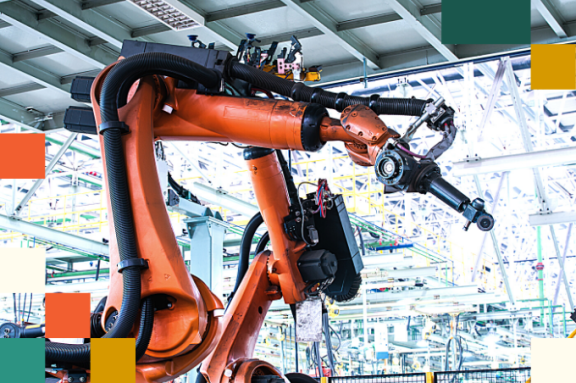1. Introduction
Manufacturing processes have undergone remarkable transformations with the advent of technology. IoT stands at the forefront of these transformations, offering the potential to revolutionize how manufacturers operate. By enabling seamless communication between devices, sensors, and systems, IoT promises to optimize production, enhance predictive maintenance, and drive innovation. However, the integration of IoT into manufacturing ecosystems comes with its own set of challenges. This is where the concept of low-code/no-code platforms comes into the picture.
2. The Promise of IoT for Manufacturers
The adoption of IoT in manufacturing can lead to a multitude of benefits. Manufacturers can gain real-time insights into their operations, monitor equipment health, track inventory, and even predict maintenance needs. With such data-driven capabilities, decision-making becomes more informed and agile. IoT also allows manufacturers to offer smart and connected products, opening up new revenue streams and customer experiences.
3. Challenges in Embracing IoT
While the potential rewards are enticing, integrating IoT into manufacturing processes can be complex and resource-intensive. Traditional software development methods often require specialized skills and significant time investments. Additionally, the heterogeneity of devices, protocols, and data formats in the IoT landscape can further complicate implementation. This is where low-code/no-code platforms come into play as a transformative solution.
4. Enter Low-Code/No-Code Platforms
Low-code and no-code platforms are designed to simplify software development by minimizing hand-coding and technical complexities. Low-code platforms provide a visual interface for building applications using pre-designed components, while no-code platforms allow users to create applications through a drag-and-drop interface without any coding knowledge. These platforms democratize application development, allowing business users to actively participate in the creation process.
5. Advantages of Low-Code/No-Code for IoT Adoption
The convergence of low-code/no-code platforms and IoT adoption offers manufacturers several advantages:
Rapid Prototyping and Deployment
Low-code/no-code platforms enable manufacturers to quickly prototype IoT applications and deploy them to the field. This agility accelerates innovation cycles and reduces time-to-market for new products and services.
Simplified Integration
Integrating diverse IoT devices, sensors, and systems can be a technical challenge. Low-code/no-code platforms abstract much of this complexity, allowing manufacturers to connect various components seamlessly.
Flexibility and Customization
Manufacturers can customize IoT applications to suit their unique needs without relying on extensive coding. This empowers domain experts to tailor solutions to specific manufacturing processes.
Empowering Non-Technical Users
Low-code/no-code platforms empower business users and subject matter experts to actively contribute to application development. This democratization reduces the burden on IT departments and fosters collaboration.
6. Use Cases: How Low-Code/No-Code and IoT Converge
The marriage of low-code/no-code and IoT is evident in various manufacturing scenarios:
Predictive Maintenance
Manufacturers can create IoT-enabled applications that monitor equipment health and trigger alerts for maintenance using low-code/no-code platforms. This predictive approach minimizes downtime and extends equipment lifespan.
Quality Control
IoT sensors can monitor production processes and identify anomalies in real time. With low-code/no-code platforms, manufacturers can rapidly develop applications that analyze sensor data, ensuring consistent product quality.
Inventory Management
Low-code/no-code platforms facilitate the creation of IoT applications that monitor inventory levels and automatically place orders when supplies are low. This streamlines supply chain operations and prevents stockouts.
Energy Efficiency
Manufacturers can use IoT to optimize energy consumption in their facilities. Low-code/no-code platforms enable the development of applications that collect and analyze energy usage data, leading to cost savings and sustainability.
7. Overcoming Skepticism and Concerns
Despite the benefits, there may be skepticism surrounding the use of low-code/no-code platforms for complex IoT implementations. Concerns about scalability, security, and vendor lock-in need to be addressed through careful platform selection and strategic planning.
8. The Road Ahead: Shaping the Future of Manufacturing
The synergy between low-code/no-code platforms and IoT is poised to reshape the manufacturing landscape. As these platforms continue to evolve, manufacturers can expect even more sophisticated tools to expedite IoT adoption. The collaboration between domain experts, business users, and IT professionals will drive innovation and accelerate digital transformation in manufacturing.
9. Conclusion
IoT has the potential to revolutionize manufacturing, and low-code/no-code platforms provide the bridge to make this transformation accessible and efficient. By simplifying the development process, these platforms empower manufacturers to harness the benefits of IoT without extensive technical expertise. As the manufacturing industry embraces this synergy, it paves the way for enhanced efficiency, innovation, and competitiveness.
FAQs
Q1: Can low-code/no-code platforms handle the complexity of IoT applications? A: Yes, modern low-code/no-code platforms are designed to accommodate the intricacies of IoT integration while abstracting technical complexities.
Q2: How does the convergence of IoT and low-code/no-code benefit manufacturers? A: It enables rapid prototyping, simplified integration, customization, and empowers non-technical users to actively contribute to application development.
Q3: What are some potential use cases for low-code/no-code and IoT in manufacturing? A: Predictive maintenance, quality control, inventory management, and energy efficiency are some examples of where these technologies converge.
Q4: What concerns should manufacturers address when considering low-code/no-code platforms for IoT adoption? A: Manufacturers should evaluate scalability, security, and potential vendor lock-in when selecting a low-code/no-code platform for IoT implementation.
Q5: How will the collaboration between domain experts, business users, and IT professionals shape the future of manufacturing? A: This collaboration will drive innovation and accelerate digital transformation, leading to enhanced efficiency, innovation, and competitiveness.




